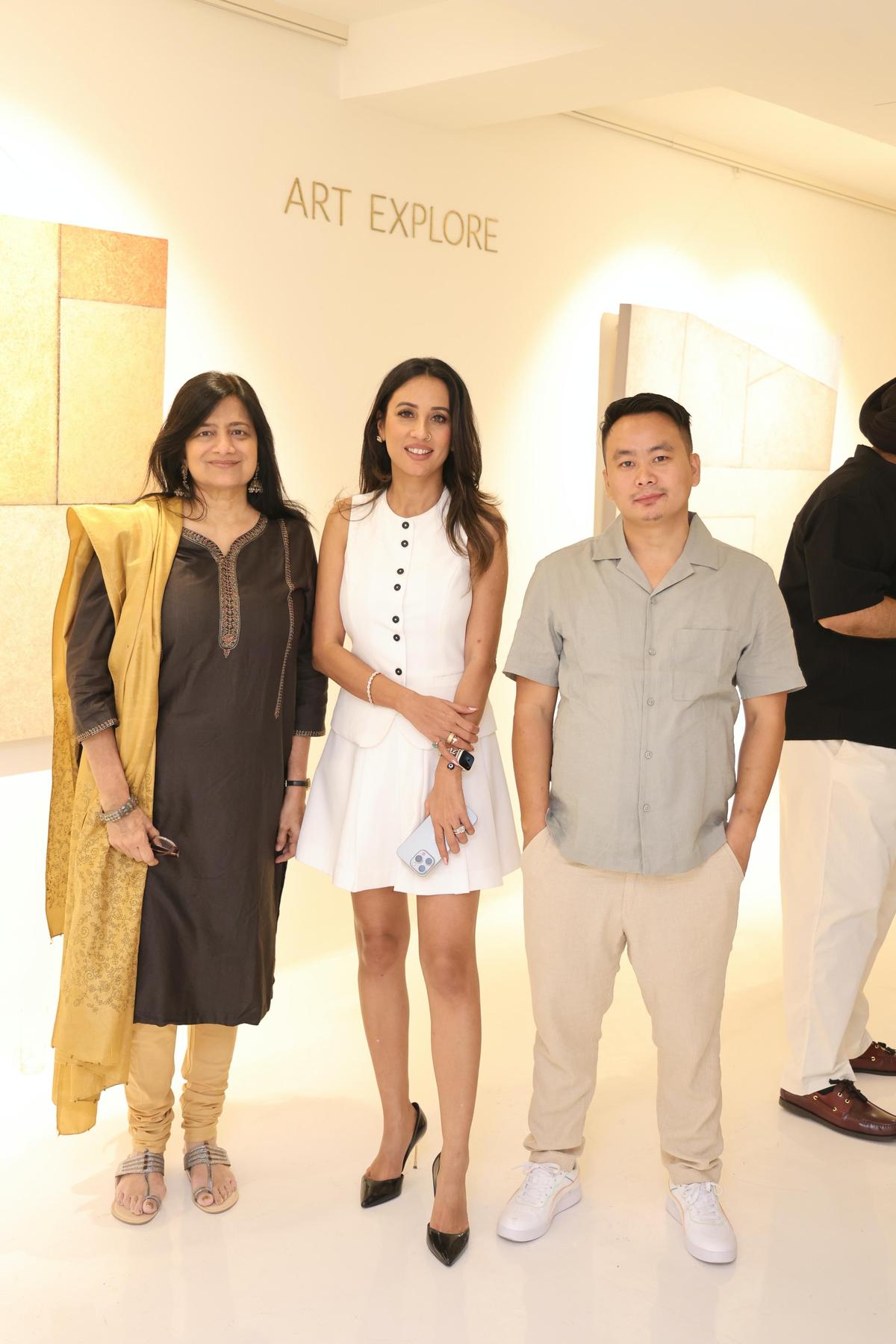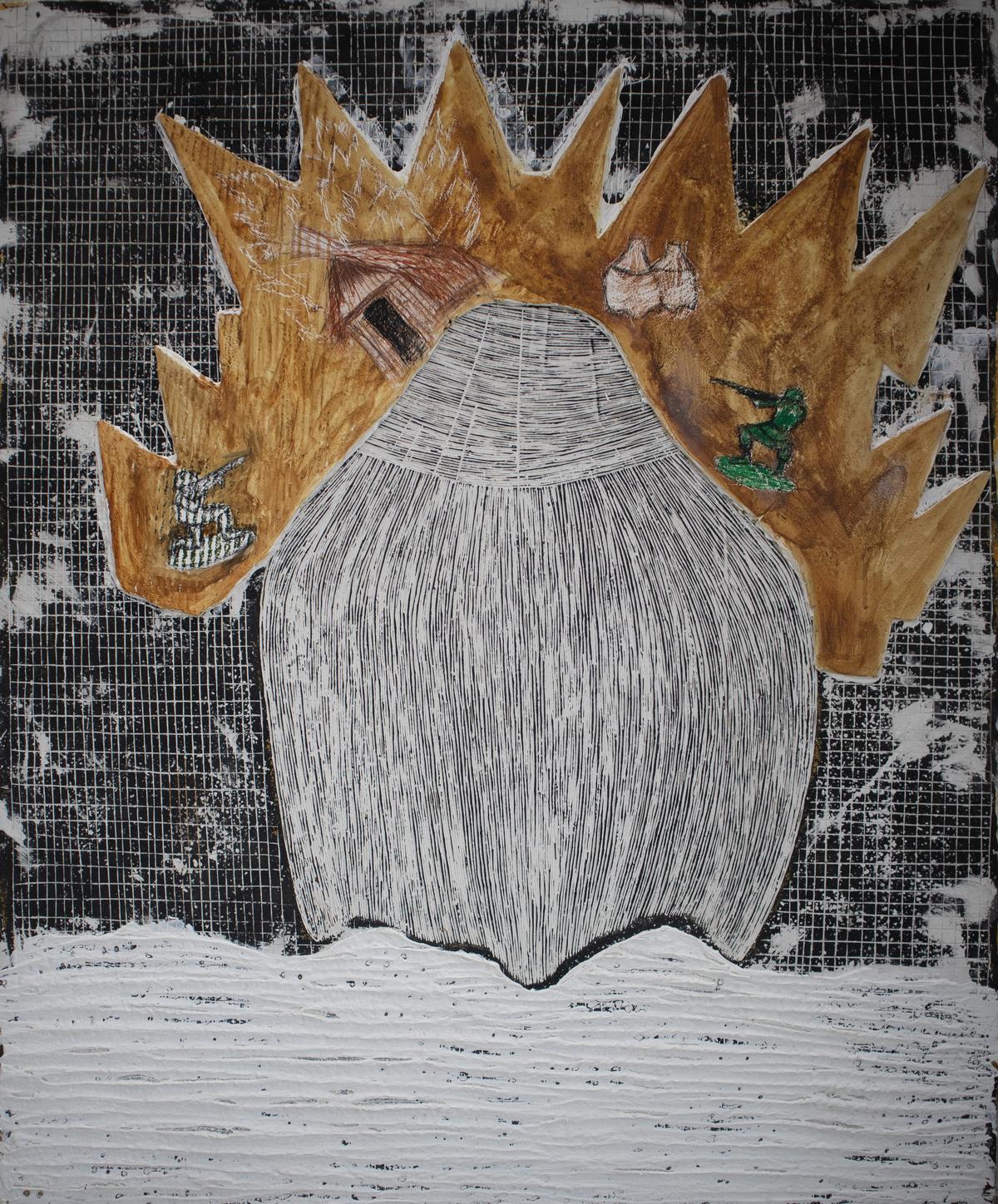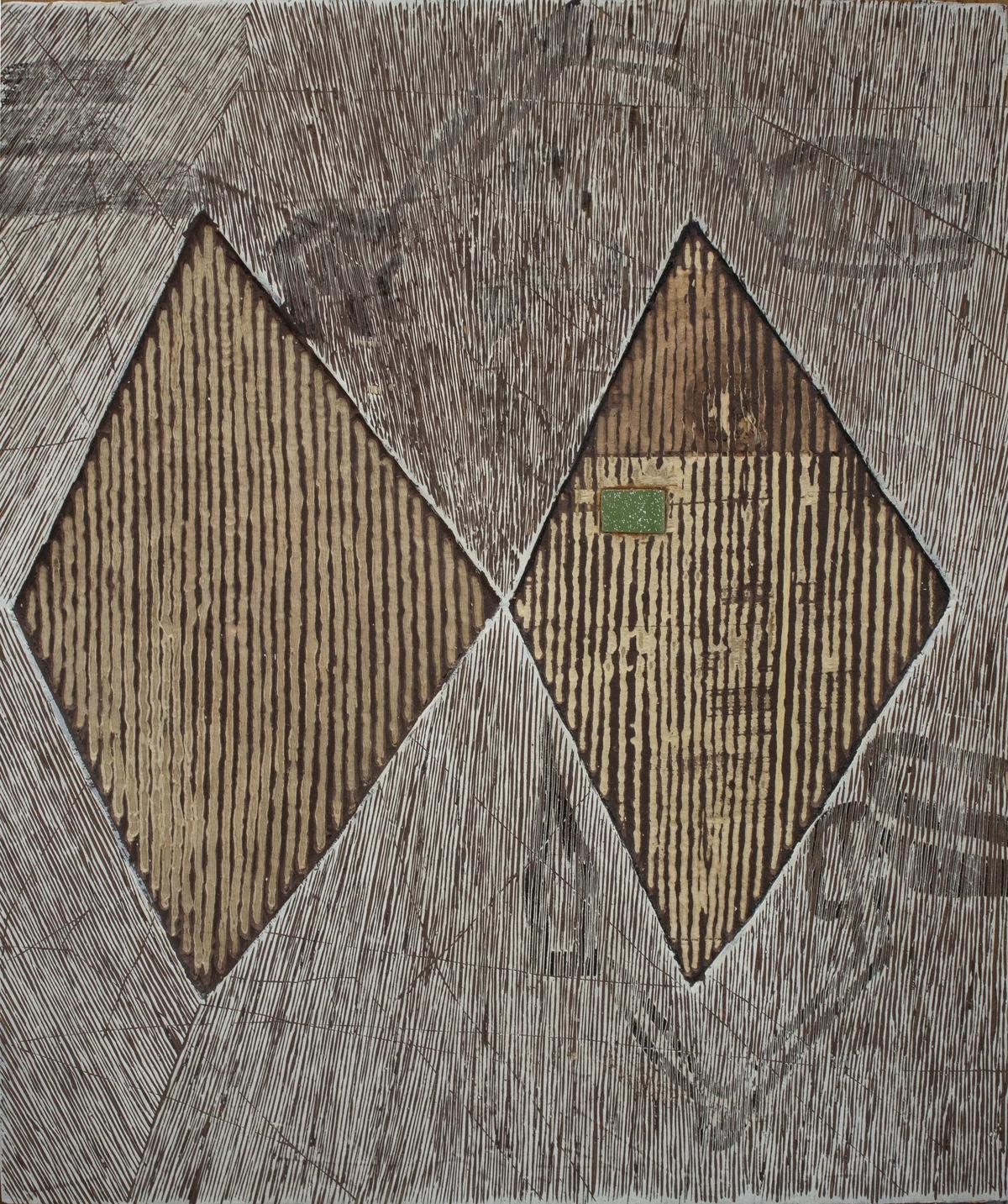In a world that rushes toward the new, memory becomes both an anchor and a compass. It roots us in what has been, even as it reshapes what might come next.
An exhibition, What Must Endure, at Art Explore, New Delhi, brings together two artists, Throngkiuba Yimchungru and Kiyomi Talaulicar, who treat memory as a living material.
Both explore what it means to carry the past while remaining open to change. Yimchungru works with timber and construction debris, elements that are already imprinted with use and time. Talaulicar, in contrast, works through layers of colour and texture, allowing memory to surface and fade like breath.
Their practices meet in an unspoken dialogue about endurance, transformation, and the subtle line between holding on and letting go.

The weight of material
For Nagaland-based artist Yimchungru, making is not about imposing meaning, but uncovering it. “For me, memory is collective,” he says. “It sits in the land, the forests, the rituals, the tools we use. The materials I work with, be it timber or debris already carry stories of labour and change.
He calls his process a kind of listening. Each groove or notch is a conversation with material and time. “Carving itself is a ritual. It’s slow, rhythmic, and attentive,” he adds. “It demands respect for the material. The repetition of cutting, shaping, and smoothing becomes a kind of ceremony.”
Seven of his works are on display, including Pulling Oil Pipe Log Drum, which draws a striking connection between the Naga log drum pulling ceremony (once a symbol of community and strength) and the industrial act of oil drilling. “The former was rooted in unity,” he says, “The latter, oil extraction, represents a modern act of exploitation. I wanted to bring these contrasting energies into dialogue.

In Dream of Pulling a Log Drum Fulfilled 2, Yimchungru finds resonance in an image from a local newspaper. It has villagers hauling a stranded car through Nagaland’s monsoon mud. The root of the problem lies in the haphazard construction of roads without consultation with scientists, geologists, and other experts. “But unlike in the past, the collective energy seen in traditional practices like the log drum pulling ceremony no longer transforms into protest or collective resistance. That absence speaks volumes,” he shares.
The fluidity of memory
Where Yimchungru builds from the tangible, Talaulicar works through the ephemeral. Her paintings hover between abstraction and recognition — a door, a leaf, or a chair that is almost there. “We don’t see the past as a complete picture; we sense it in fragments,” she says. “When something is partly visible, it allows imagination to enter.”
Talaulicar’s process is intuitive, built through layering and erasure. “Endurance, to me, comes from honesty,” she explains. “A work endures when it carries something true, however fragile. I add and remove layers until the visual feels alive to me. Some aspects stay, others fade. What endures is what continues to speak quietly, even when I stop painting.”
Her 14 works in the exhibition trace the emotional textures of memory. In The Journey Home, Talaulicar reflects on the transitory nature of belonging while Holding Together explores hope and possibility. Thrive, a small mixed-media work, celebrates resilience amid uncertainty.
“Memory is fluid. It moves through everything we experience. It lives in traces like a shadow on a wall, the colour on torn fabric, or the sparkle on a drop of water,” she says. “My work is less about recalling specific events and more about sensing what lingers.”
Between collective and personal
Placed together, Yimchungru and Talaulicar offer two distinct yet intertwined vocabularies of remembrance. One works through material weight, the other through sensory residue.

Both artists turn the past into motion, reminding us that memory is never static. “I treat the past as movement, not memory,” says Yimchungru. “By using ancestral methods to speak about what’s happening today, I keep it alive as a living force, not a museum piece.” Talaulicar echoes this sentiment: “The past stays alive when I allow it to shift and breathe naturally.”
The exhibition is on until October 20 from Monday to Saturday, 11am to 6pm at Art Explore, E 55, Lower Ground, Panchsheel Park, New Delhi.
Published – October 16, 2025 05:33 pm IST
